Discover how to create a perfectly seasoned roast chicken with the right rub. Whether you're looking for ingredient breakdowns, homemade recipes, or store-bought options, this guide provides clear, actionable advice to elevate your cooking results. Learn essential techniques and tips for maximum flavor and safety.
- What Is a Roast Chicken Rub?
- Why Use a Rub on Roast Chicken?
- Essential Ingredients in a Great Chicken Rub
- How to Make Your Own Roast Chicken Rub
- Top Store-Bought Roast Chicken Rubs Reviewed
- Buying Guide: What to Look For in a Chicken Rub
- Pro Cooking Tips for Using Rubs on Chicken
- Serving Suggestions & Flavor Pairings
- Frequently Asked Questions
- Conclusion
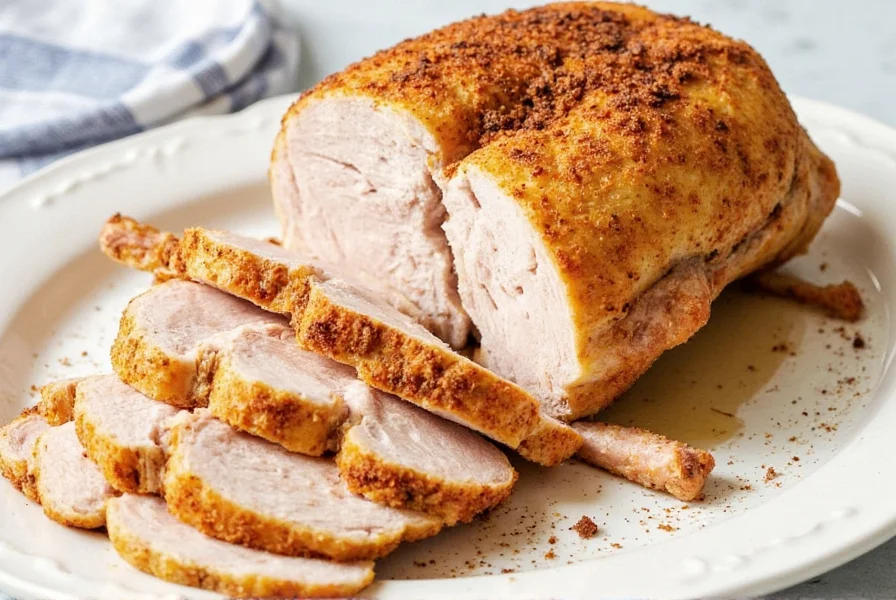
What Is a Roast Chicken Rub?
A rub is a dry mixture of seasonings applied directly to meat before cooking. Unlike wet marinades, rubs form a flavorful crust during roasting while enhancing natural flavors without altering texture. This technique is widely used in professional kitchens for consistent seasoning and optimal results.
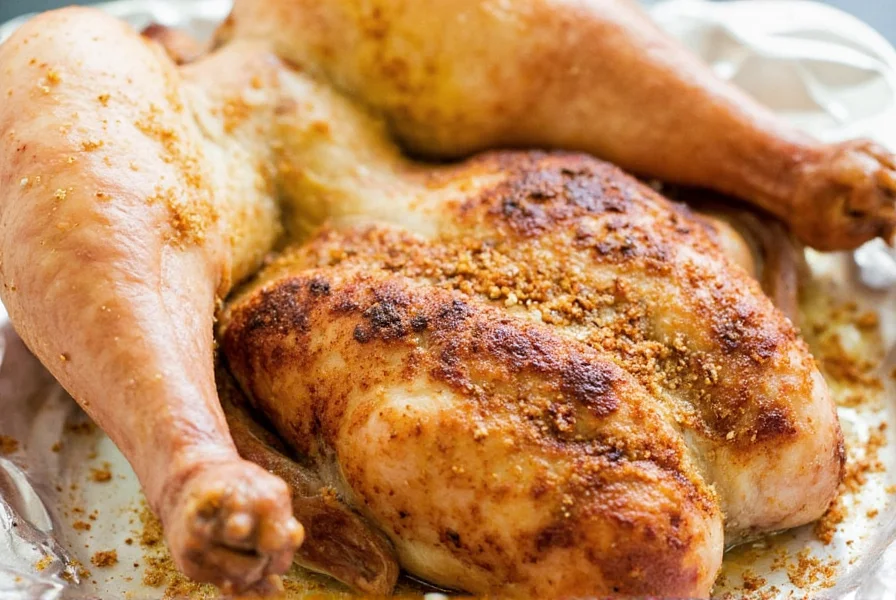
Why Use a Rub on Roast Chicken?
Using a rub on roast chicken provides multiple culinary benefits:
- Enhances flavor evenly across the entire bird
- Creates a savory crust through Maillard reaction
- Preserves natural moisture while adding complexity
- Allows customization for specific taste preferences
Essential Ingredients in a Great Chicken Rub
Effective chicken rubs balance salt, sweetness, heat, and earthiness. Understanding each ingredient's role ensures optimal results:
| Ingredient | Function | Flavor Profile |
|---|---|---|
| Salt | Seasoning, moisture control | Savory, briny |
| Black Pepper | Sharpness, complexity | Pungent, woody |
| Paprika | Color, mild sweetness | Earthy, smoky (if smoked) |
| Garlic Powder | Umami boost | Pungent, savory |
| Onion Powder | Background sweetness | Mellow, caramelized |
| Thyme/Rosemary | Herbaceous depth | Fragrant, piney (rosemary), floral (thyme) |
| Brown Sugar | Balance, Maillard reaction enhancer | Sweet, caramelized |
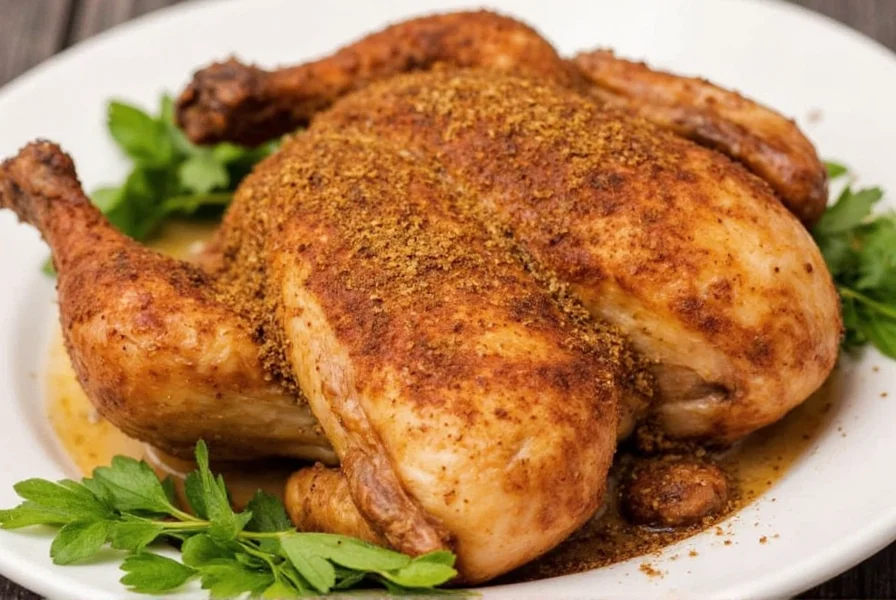
How to Make Your Own Roast Chicken Rub
Creating a custom rub allows precise flavor control. This tested recipe delivers consistent results:
Classic Homemade Chicken Rub Recipe
- 2 tbsp paprika
- 1 tbsp kosher salt
- 1 tsp black pepper
- 1 tsp garlic powder
- 1 tsp onion powder
- 1 tsp dried thyme
- 1 tsp brown sugar
- ½ tsp cayenne pepper (optional)
Mix thoroughly and apply generously. For best results, refrigerate for at least 1 hour before cooking to allow flavors to penetrate.
Variations to Try
- Smoky BBQ Rub: Add 1 tsp smoked paprika and ½ tsp chili powder
- Herb-Centric Blend: Increase thyme and rosemary; add ½ tsp lemon zest powder
- Sweet & Spicy: Boost brown sugar to 2 tsp and add 1 tsp ground cumin
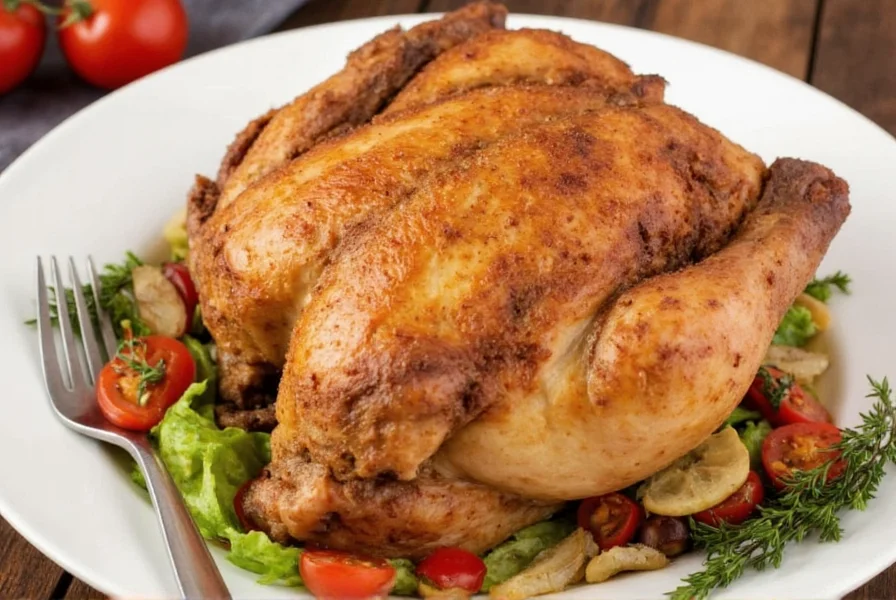
Top Store-Bought Roast Chicken Rubs Reviewed
When choosing commercial rubs, consider these trusted options:
1. Badia All-Purpose Seasoning
- Features: Salt-free blend with garlic, oregano, and citrus notes
- Best for: Lighter dishes where you don't want overpowering salt
- Use case: Great for whole birds or cutlets
2. McCormick Roasted Chicken Seasoning Mix
- Features: Contains onion, parsley, turmeric, and celery seed
- Best for: Classic, family-friendly roast chicken dinners
- Use case: Perfect for oven-roasted chicken with potatoes
3. Carolina Style Poultry Rub by The BBQ Rub Company
- Features: Mildly sweet with paprika and vinegar notes
- Best for: Southern-style roasted or smoked chicken
- Use case: Ideal for outdoor grilling or slow roasting
4. Williams Sonoma Roast Chicken Rub
- Features: Gourmet blend with lemon peel, sage, and white pepper
- Best for: Elegant dinner parties or special occasions
- Use case: Best paired with herb butter under the skin
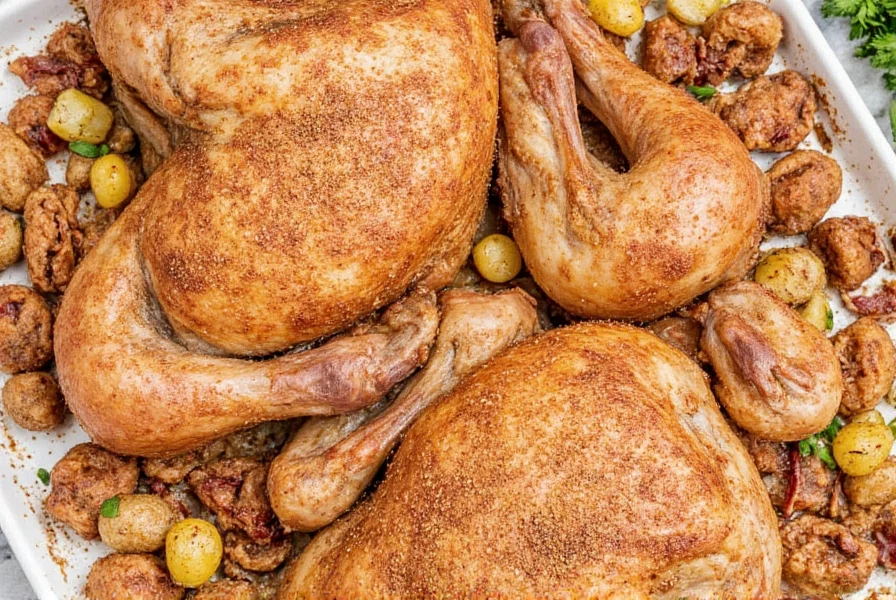
Buying Guide: What to Look For in a Chicken Rub
Selecting the right rub involves these key considerations:
- Salt Content: Opt for low-sodium versions if preferred
- Ingredients List: Fewer recognizable ingredients typically indicate better quality
- Flavor Profile: Match to your cooking method and taste preferences
- Intended Use: Choose based on roasting, grilling, or air-frying requirements
- Allergens & Dietary Needs: Check for gluten-free, vegan, or preservative-free labels
| Rub Brand | Flavor Type | Best For | Dietary Info |
|---|---|---|---|
| Badia All-Purpose | Light, herby | Healthy meals | Vegan, gluten-free |
| McCormick Roasted Chicken | Classic, salty | Family dinners | Kosher, no artificial flavors |
| The BBQ Rub Co. Carolina | Smoky-sweet | Grilled chicken | No MSG, non-GMO |
| Williams Sonoma | Elegant, citrusy | Dinner parties | High-end, gourmet |
Pro Cooking Tips for Using Rubs on Chicken
- Rub Generously: Apply thickly for even flavor distribution
- Let It Rest: Minimum 1 hour refrigeration for flavor penetration
- Under the Skin: Loosen skin and apply rub directly to meat for juiciness
- Bake at Proper Temperature: 375°F–425°F ensures crispy skin and tender meat
- Pair with Fat: Brush with olive oil or melted butter before applying rub for better adhesion
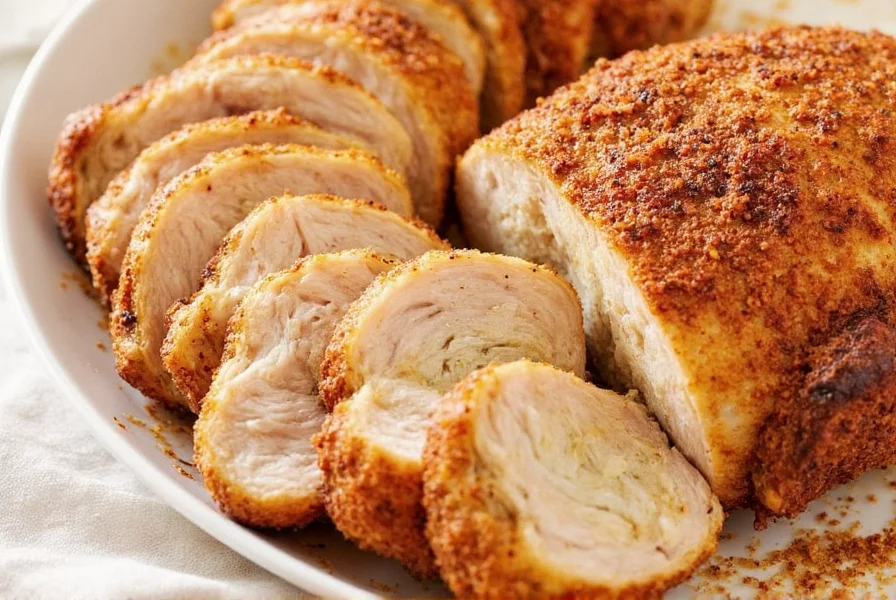
Serving Suggestions & Flavor Pairings
Complete your roast chicken experience with these complementary options:
- With Gravy: Use drippings for rich, flavorful sauce
- Over Mashed Potatoes: Classic comfort food combination
- With Salad: Light green salad balances richness
- With Bread: Crusty baguette soaks up juices perfectly
- Wine Pairing: Medium-bodied whites like Chardonnay or light reds like Pinot Noir
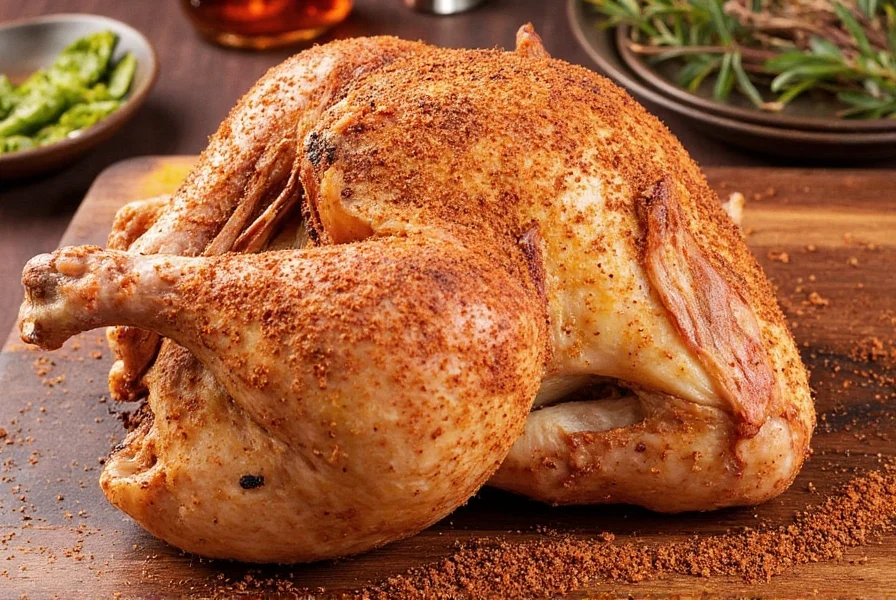
Frequently Asked Questions About Roast Chicken Rubs
How long should I let the rub sit on chicken before cooking?
For optimal flavor, let the rub sit on the chicken for at least 1 hour at room temperature or preferably overnight in the refrigerator. The longer it sits, the deeper the flavor penetration. If short on time, 30 minutes will still provide decent results.
Can I use a rub on frozen chicken?
No, you should always thaw chicken completely before applying a rub. Applying rub to frozen chicken won't allow proper adhesion or flavor absorption. Thaw in the refrigerator for 24-48 hours depending on size, then pat dry before applying the rub.
How much rub should I use for a whole chicken?
For a standard 3-4 pound chicken, use about 2-3 tablespoons of rub. Start with the breast area, then move to the legs, wings, and back. Don't forget to loosen the skin and apply some rub directly on the meat for best results.
Why does my rub burn during roasting?
Sugars in rubs (like brown sugar) can burn at high temperatures. To prevent this, keep your oven temperature below 425°F, or cover the chicken with foil during the first part of cooking. You can also reduce sugar content in your rub if burning is a recurring issue.
Can I use the same rub for other poultry like turkey?
Absolutely! Most chicken rubs work wonderfully on turkey as well. You may want to increase the quantity proportionally for larger birds, and consider adding a bit more salt for turkey which is leaner than chicken.
How should I store homemade rub?
Store in an airtight container in a cool, dark place for up to 6 months. Avoid storing in direct sunlight or near heat sources, which can degrade the flavor compounds in your spices. Label with the date for best freshness tracking.
Conclusion
A great roast chicken starts with proper seasoning. Whether you choose to mix your own or select a trusted commercial product, following these guidelines ensures flavorful, safe results every time. Experiment with different combinations to discover your perfect rub profile and enjoy consistently delicious meals.

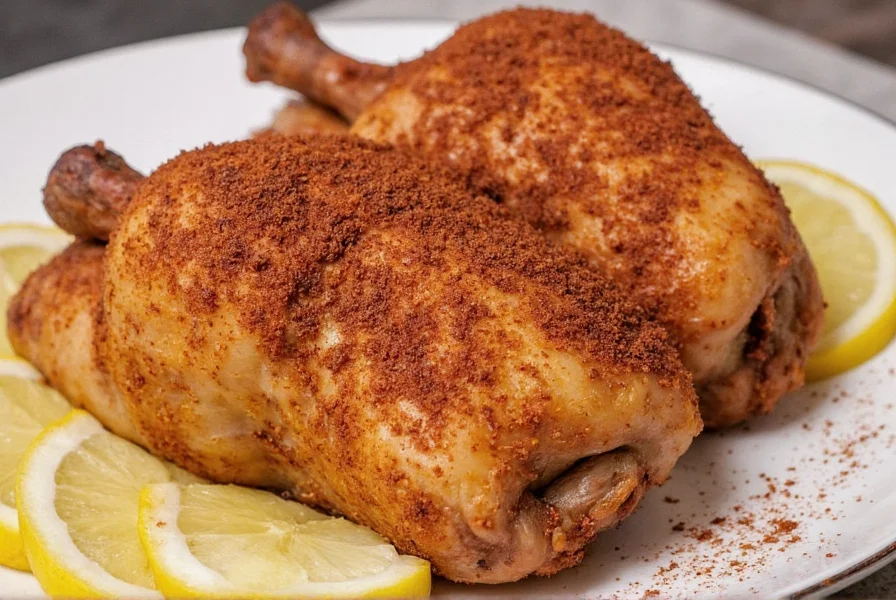









 浙公网安备
33010002000092号
浙公网安备
33010002000092号 浙B2-20120091-4
浙B2-20120091-4